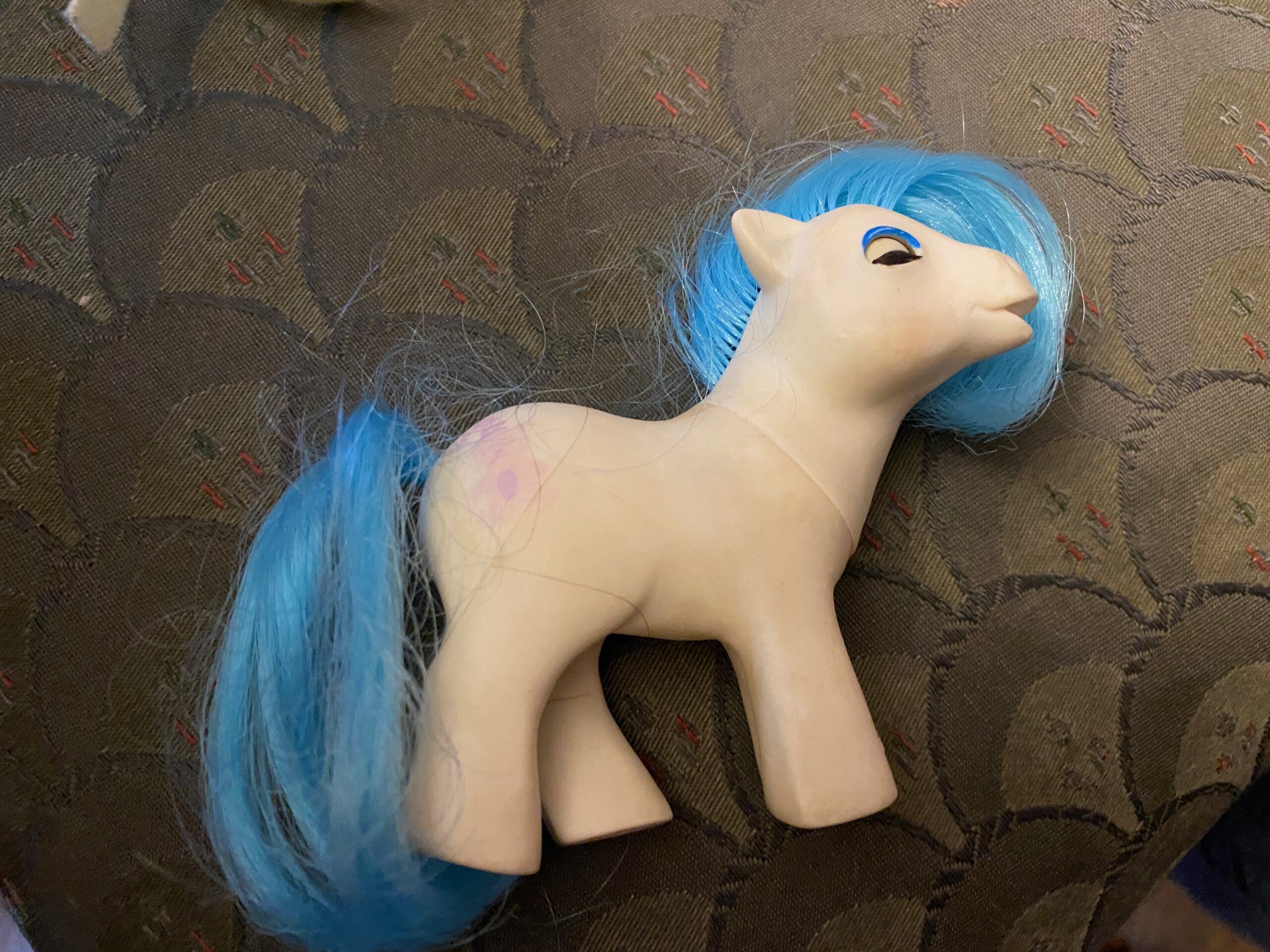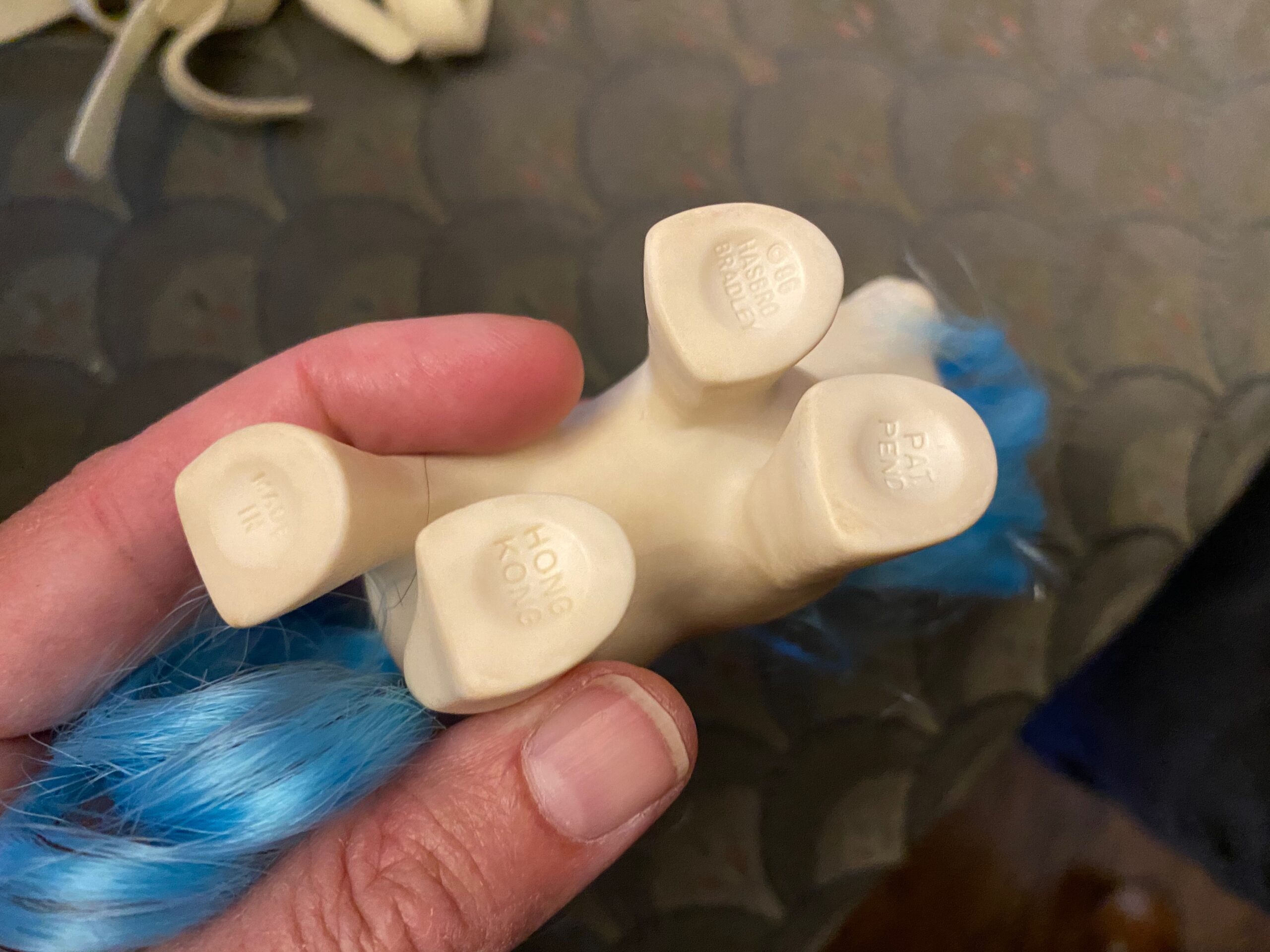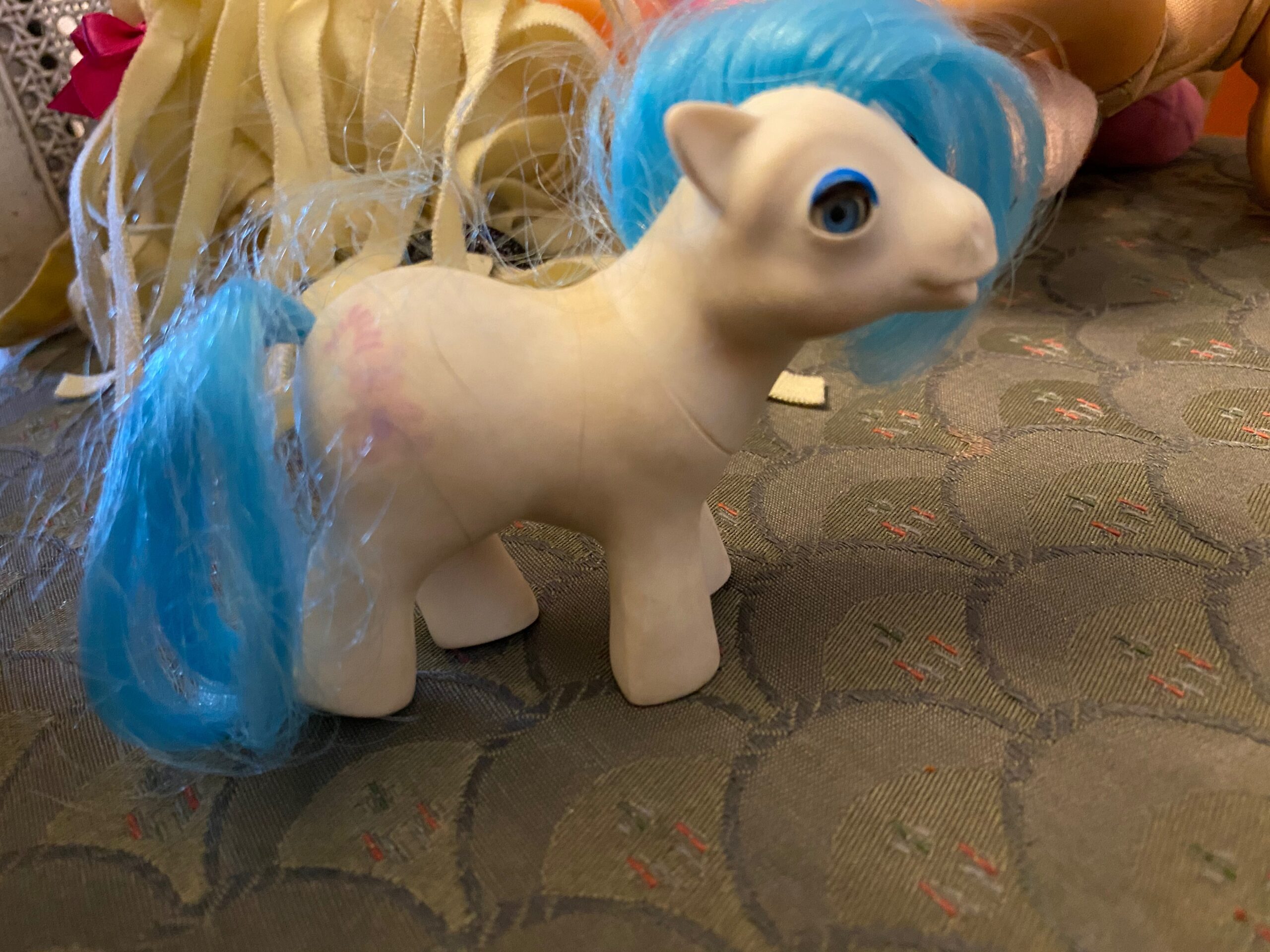1986 G1 Baby Sleepy Pie My Little Pony Doll with beddy-bye eyes: 13,700 ppm Lead. Not safe for kids by today’s standards.

July 5, 2021 — Monday
For those new to this website:
Tamara Rubin is a multiple-federal-award-winning independent advocate for childhood Lead poisoning prevention and consumer goods safety and a documentary filmmaker. She is also a mother of Lead-poisoned children (two of her sons were acutely Lead-poisoned in 2005). Since 2009, Tamara has been using XRF technology (a scientific method used by the U.S. Consumer Product Safety Commission) to test consumer goods for toxicants (specifically heavy metals — including Lead, Cadmium, Mercury, Antimony, and Arsenic). Tamara’s work was featured in Consumer Reports Magazine in February of 2023 (March 2023 print edition).
1986 G1 Baby Sleepy Pie My Little Pony Doll with beddy-bye eyes: 13,700 ppm Lead. Not safe for kids by today’s standards.
90 PPM Lead (or higher) is unsafe for kids
The amount of Lead that is considered unsafe for items intended for use by children and made today is anything 90 ppm Lead or higher in the paint, glaze, or coating, and anything 100 ppm Lead or higher in the substrate. With at least one component of this pony doll (the eyes) testing positive for more than 13,000 ppm Lead I would not consider this doll safe for use by children today. Most important to know for context: this toy would be illegal if manufactured today.
“But I had a doll like this when I was a kid and I am ok!”
The sentiment expressed in the above quote (or some version of it) is a common refrain, and in response I wrote an entire article for you to share with parents or grandparents (or spouses or friends) whose lack of concern is based on that notion. Here’s a link to that article here. The fundamental guiding principle that we can all use in a situation like this is “Know Better, Do Better” – why would you knowingly give your child a toxic toy to play with? [Especially a younger child who might put a toy like this in their mouth!]
“Will my child get poisoned by using this particular toy?”
Strangely, this is a complete unknown — there is no manufacturer that has a financial interest in underwriting research to quantify the potential risk of their historic / vintage / legacy products (even though these are products that were often “made to last a lifetime”, and are being handed down through the generations). In a case like this the best we can hope for is for the company to make a pubic statement alerting consumers to the fact that their legacy products may not be safe for use by children. A great example of this is Fisher Price’s recent public statements about their legacy toys – link.
There have been several independent studies that demonstrate a basis for real potential concern for toxicants found in vintage plastic toys in general (without identifying specific toys and specific manufacturers of concern). Here’s a link with more information. In my educated opinion – it is simply not worth the possible risk to allow any kid to play with this category of vintage toys incorporating such potentially high levels of multiple neurotoxic metals (in the case of this pony, you can see from the reading set below that there are three toxic metals involved.) There are plenty of modern safer choices available for kids today (including all modern My Little Pony dolls!) – and they are normally quite inexpensive. Here’s an affiliate link* for a good example: https://amzn.to/2TDTULB
The specific toxicant profile for the eyes of the pony doll pictured here
Below are the exact XRF test results for the toy pictured. Please read this article for more information about the testing methodologies used on this website. Note: you cannot do this testing yourself at home (the appropriate XRF instruments are both incredibly expensive and require training and experience to use correctly), which is why I do the testing and report the results (free of charge/not behind a paywall) here on my site so parents have access to this information. If you are interested in having me test an item and report the results on the website — please read this article (link). If you have some of the Lead-contaminated items shown on this site, please read this article discussing what you can do with them.
- Lead (Pb): 13,700 +/- 1,000 ppm
- Cadmium (Cd): 186 +/- 33 ppm
- Antimony (Sb): 108 +/- 46 ppm
- Bromine (Br): 469 +/- 51 ppm
- Mercury (Hg): non-detect
- Barium (Ba): non-detect
- Chromium (Cr): non-detect
- Selenium (Se): non-detect
This pony was kept by the owner as it was sentimental to them. I have since ordered one of these vintage toy ponies on e-bay so I can do some more thorough testing and will report the full test results for each component of the pony (including each color of paint on the doll) as soon as I have that information available.
As always, please let me know if you have any questions and I will do my best to answer them personally as soon as I have a moment. Thank you for reading and for sharing our work.
Tamara Rubin
#LeadSafeMama
*Amazon links are affiliate links. If you purchase something after clicking one of my links I may receive a small percentage of what you spend, at no extra cost to you.
Never Miss an Important Article Again!
Join our Email List










